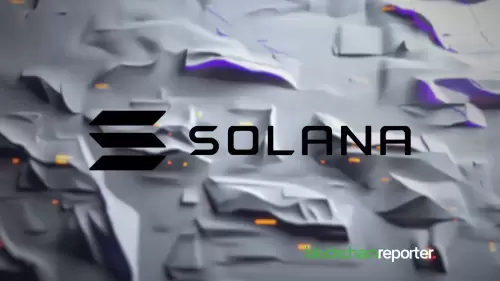 |
|
 |
|
 |
|
 |
|
 |
|
 |
|
 |
|
 |
|
 |
|
 |
|
 |
|
 |
|
 |
|
 |
|
 |
|
加密貨幣新聞文章
Tether's USDT Faces Unprecedented Regulatory Challenges as EU's MiCA Regulation Enters Full Implementation
2025/05/05 18:28

The European Union’s Markets in Crypto-Assets (MiCA) regulation has reached full implementation, placing unprecedented regulatory challenges on Tether’s USDT—the world’s largest stablecoin, boasting a market cap of over $138 billion.
This investigative report delves into the critical intersection between MiCA’s stringent compliance requirements and Tether’s established business practices. We'll also examine the potential market implications and strategic options open to both regulators and market participants as this financial drama unfolds.
Since December 30, 2024, when the European Union’s Markets in Crypto-Assets (MiCA) regulation came into full implementation, the regulatory landscape for stablecoins in Europe has undergone a sea change.
This groundbreaking legislation marks the EU’s attempt to bring order to the previously largely unregulated cryptocurrency market. It has major implications for all market participants, but some of the most critical challenges arise from MiCA’s provisions for stablecoins and how they intersect with the operations of large stablecoin issuers like Tether.
The timing of this regulatory development couldn’t be more interesting. As the world’s largest stablecoin, Tether’s USDT plays a significant role in crypto market liquidity and trading.
With more than $138 billion in market capitalization and over 350 million users worldwide, any challenge to USDT’s operations has broad implications for the cryptocurrency ecosystem at large.
According to a recent Market Report by Tether Casino, USDT is used in approximately 70% of all stablecoin trading pairs on major exchanges, making it “the de facto liquidity backbone of the cryptocurrency market.” The report further notes that even brief periods of unavailability for USDT could trigger substantial market volatility and liquidity contractions across multiple trading venues.
A closer look at MiCA’s requirements for stablecoins
In essence, MiCA establishes a broad framework for crypto-assets, placing several key requirements on stablecoins. The regulation categorizes stablecoins into two main types:
• e-money tokens, defined as stablecoins pegged to the value of one currency, are subject to licensing and supervision by the national competent authority of the issuer’s main establishment.
• multi-stablecoins or basket-linked coins, which are linked to the value of a single currency, a basket of currencies, or another measurable unit of value, fall under the scope of the European Banking Authority (EBA).
For both categories of stablecoins, MiCA mandates several critical compliance requirements:
• Issuers must hold sufficient own funds, undergo regular supervision, and maintain a minimum solvency ratio.
•र्जा अपनाए जाने से पहले से इन्क्यूबेट करते हैं। जल्दी से इन्क्यूबेट करें। जल्दी से इन्क्यूबेट करें। जल्दी से इन्क्यूबेट करें। जल्दी से इन्क्यूबेट करें। जल्दी से इन्क्यूबेट करें।
• Stablecoins used as a means of payment will be subject to a transaction limit of €200 million or 1 million transactions daily.
Tether faces several key challenges in achieving full compliance with MiCA. These challenges highlight the broader difficulties encountered by institutions in adapting to the evolving regulatory landscape.
As of May 2025, Tether has yet to obtain the Electronic Money Institution (EMI) license required under MiCA, nor has the company announced any concrete plans to secure the necessary permit.
This stands in stark contrast to Circle, which achieved a major milestone in July 2024 when it received the first MiCA-compliant EMI license from French authorities for its USDC stablecoin.
However, Circle’s application was made in December 2023, and it took seven months for the license to be granted, presenting another layer of complexity.
Tether has faced criticism in the past regarding the transparency of its reserves, and although the company has increased disclosure with attestations from accounting firms like BDO, these fall short of the full audits demanded by MiCA.
According to Tether CEO Paolo Ardoino, approximately 83% of Tether’s reserves are currently held in U.S. Treasury securities and cash equivalents. This structure would need significant adjustment to meet MiCA’s stipulation that large stablecoin issuers must keep the majority of their reserves with EU-authorized credit institutions.
Moreover, Tether has openly expressed concerns about the scope of MiCA’s requirements for stablecoin reserve management. In October 2024, Ardoino stated that “some aspects of MiCA will make the operation of EU-licensed stablecoins more complex and potentially introduce new risks to both local banking infrastructure and stablecoins themselves.”
These concerns appear to stem from what Tether deems excessive restrictions on their ability to manage reserves effectively. A key point of contention is the European Central Bank’s deposit insurance limit
免責聲明:info@kdj.com
所提供的資訊並非交易建議。 kDJ.com對任何基於本文提供的資訊進行的投資不承擔任何責任。加密貨幣波動性較大,建議您充分研究後謹慎投資!
如果您認為本網站使用的內容侵犯了您的版權,請立即聯絡我們(info@kdj.com),我們將及時刪除。
-

-

-

- 花式農場野餐:在2026年美國眾議院比賽中偷看
- 2025-08-05 08:04:52
- 肯塔基州的幻想農場野餐為2026年的美國眾議院提供了一個舞台,適應不斷發展的政治景觀,並提出了早期開始競選季節的信號。
-

-

-

-

-

-






























































